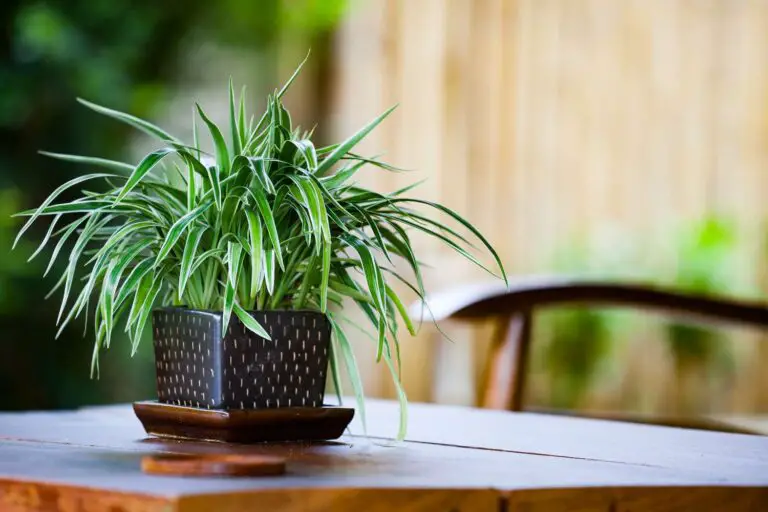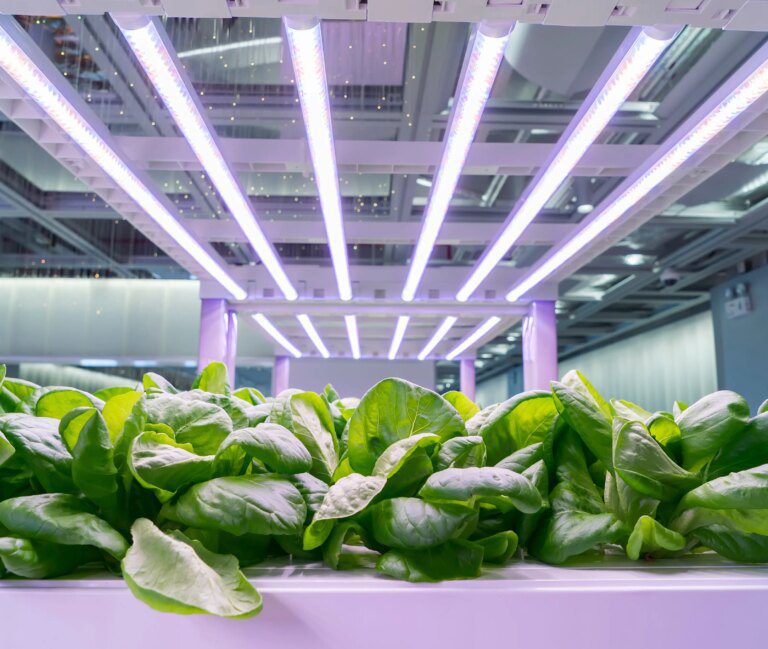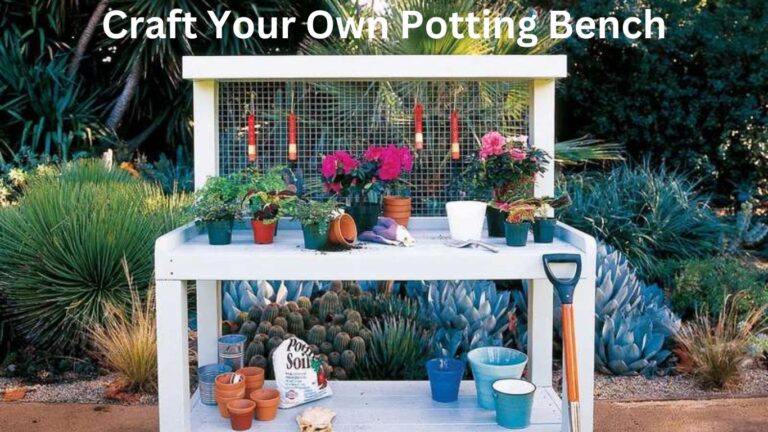Jacob’s Ladder Plant: Polemonium Care Guide
Table of Contents
Growing Conditions for Jacob’s Ladder Plant
Jacob’s Ladder plants thrive in cool, moist environments with partial shade, making them ideal for woodland gardens or areas with dappled sunlight. These plants prefer rich, well-draining soil that is slightly acidic with a pH level between 5.5 and 6.5. Ensuring adequate air circulation around the plant is crucial to prevent common moisture-related issues such as mildew or fungal diseases.
In terms of temperature, Jacob’s Ladder plants prefer cooler climates and are tolerant of light frosts. Avoid planting them in areas with intense heat or prolonged direct sunlight, as this can cause the plant to wilt. Providing ample water through consistent, moderate watering is essential for the optimal growth of Jacob’s Ladder plants. Avoid overwatering, as it can lead to root rot, but ensure the soil remains consistently moist to support healthy growth.

Choosing the Right Location for Your Polemonium
When selecting the ideal location for your Polemonium plant, it is essential to consider the specific needs of this species. Polemonium, commonly known as Jacob’s Ladder, thrives in partial shade to full shade conditions. Therefore, it is recommended to place your Polemonium in an area of your garden that receives dappled sunlight or filtered shade throughout the day.
Additionally, Polemonium prefers moist, well-draining soil rich in organic matter. Choose a spot with soil that retains moisture but does not become waterlogged. By ensuring these growing conditions are met, you can promote healthy growth and vibrant blooms in your Polemonium plant.
Soil Requirements for a Healthy Jacob’s Ladder Plant
Jacob’s Ladder plants thrive best in well-draining soil that is rich in organic matter. These plants prefer a slightly acidic to neutral soil pH ranging from 5.5 to 7.0. Ensuring good soil structure is essential for the healthy growth of Jacob’s Ladder, as it aids in proper root development and nutrient uptake. Amending the soil with compost or well-rotted manure before planting can help create an optimal growing environment for these delicate perennials.
Additionally, it is crucial to provide adequate soil moisture for Jacob’s Ladder plants. While they do not tolerate waterlogged conditions, consistent moisture is essential, especially during dry periods. Applying a layer of organic mulch around the base of the plant can help retain soil moisture, regulate soil temperature, and suppress weed growth. Monitoring the soil moisture levels regularly and adjusting watering practices accordingly can contribute significantly to the overall health and vigor of your Jacob’s Ladder plants.
Table
| Requirement | Description |
|---|---|
| Moisture Retention | Jacob’s Ladder thrives in moist soil conditions. It prefers soil that retains moisture well without becoming waterlogged. |
| Well-Draining | While moisture retention is crucial, it is equally important to ensure that the soil drains well. Poorly drained soil can lead to root rot and other fungal diseases. |
| pH Level | Jacob’s Ladder prefers slightly acidic to neutral soil with a pH range between 5.5 and 7.0. Soil pH affects nutrient availability, so maintaining the correct pH level is vital for optimal growth. |
| Nutrient-Rich | Like most plants, Jacob’s Ladder benefits from nutrient-rich soil. A fertile soil composition provides the necessary elements for healthy foliage and abundant blooms. |
Watering Needs of Polemonium
Polemonium plants have specific watering requirements to thrive and remain healthy in your garden. These plants prefer consistently moist soil, but it’s crucial to avoid overwatering, as they are susceptible to root rot. During the growing season, check the soil moisture regularly by inserting your finger into the soil up to a few inches deep. Water your Polemonium when the top 1-2 inches of soil feel dry to the touch, providing enough water to thoroughly moisten the root zone without causing waterlogging.
It’s essential to water your Jacob’s Ladder plant deeply rather than shallowly. This encourages the roots to grow deeply, making the plant more resilient to drought conditions. Consider using a soaker hose or drip irrigation system to ensure slow, deep watering that allows the moisture to penetrate the soil and reach the roots effectively. During hot summer months, pay close attention to the moisture levels and adjust your watering frequency accordingly to prevent the soil from drying out completely. Remember, consistent and adequate watering is key to promoting healthy growth and blooming in your Polemonium.

Fertilizing Tips for Jacob’s Ladder Plant
When it comes to fertilizing your Jacob’s Ladder plant, it is essential to choose a balanced fertilizer that provides the necessary nutrients without overfeeding. Opt for a slow-release fertilizer with equal parts nitrogen, phosphorus, and potassium to promote overall plant health and encourage robust growth. Applying fertilizer in the early spring before new growth emerges and again in mid-summer can help sustain the plant throughout its growing season.
Avoid excessive fertilization as it can lead to nutrient imbalances and affect the plant’s overall well-being. Overfertilization can manifest in symptoms like leaf burn, stunted growth, or susceptibility to diseases. Always follow the manufacturer’s instructions regarding the application rate and frequency to prevent unnecessary stress on your Jacob’s Ladder plant. Remember, a moderate and consistent fertilization routine is key to maintaining a thriving and vibrant plant in your garden.
Pruning and Deadheading Your Polemonium
Pruning and deadheading your Polemonium plant are essential tasks to maintain its health and promote better growth and blooming. Deadheading, the process of removing spent flowers, encourages the plant to produce more blooms and prevents it from using energy on seed production. Simply pinch off the faded flowers at their base to stimulate new flower development. Regular deadheading throughout the blooming season will keep your Jacob’s Ladder plant looking fresh and vibrant.
When it comes to pruning Polemonium, it’s best to do so in the early spring when new growth is just starting to emerge. Trim back any dead or damaged stems to promote new growth and maintain a tidy appearance. You can also cut back any overly tall or leggy branches to encourage a bushier, more compact growth habit. By practicing proper pruning techniques, you can shape your Polemonium plant to your desired form and ensure it remains healthy and visually appealing throughout the growing season.
Dealing with Pests and Diseases on Your Jacob’s Ladder Plant
Pests and diseases can pose a threat to the health and vitality of your Jacob’s Ladder plant. Common pests that may target Polemonium include aphids, spider mites, and slugs. These pests can cause damage to the foliage and weaken the overall growth of the plant. To mitigate the risk of infestation, regularly inspect your Jacob’s Ladder for any signs of pest activity. You can also introduce beneficial insects such as ladybugs or lacewings to naturally control pest populations in your garden.
In addition to pests, Jacob’s Ladder plants are susceptible to certain diseases such as powdery mildew and leaf spot. Powdery mildew often manifests as a white powdery substance on the leaves, while leaf spot appears as dark spots or lesions. To prevent the occurrence of these diseases, ensure proper air circulation around the plant by spacing them adequately and avoiding overhead watering. If your Polemonium does show signs of disease, promptly remove and dispose of any affected plant parts to prevent the spread of infection to healthy foliage.
| Issue | Description | Preventive Measures | Treatment |
|---|---|---|---|
| Aphids | These tiny insects feed on plant sap, causing distorted growth and yellowing leaves. | – Regularly inspect your plant for aphids. – Encourage natural predators like ladybugs and lacewings. – Spray with neem oil or insecticidal soap if infestation occurs. | – Wash off aphids with a strong stream of water. – Apply insecticidal soap or neem oil if needed. |
| Slugs and Snails | Slugs and snails chew on leaves, leaving irregular holes. They are most active during damp weather. | – Remove hiding places like debris and weeds. – Set up beer traps to attract and drown them. – Use copper barriers around the plant base. | – Handpick slugs and snails. – Apply iron phosphate-based slug bait if necessary. |
| Leaf Spot Diseases | Fungal diseases cause brown or black spots on leaves. | – Avoid overhead watering to prevent splashing. – Space plants properly for good air circulation. – Apply fungicides as a preventive measure. | – Remove affected leaves promptly. – Apply fungicides if the disease persists. |
| Powdery Mildew | A white powdery substance on leaves due to fungal infection. | – Provide good air circulation. – Avoid overhead watering. – Apply fungicides preventively. | – Remove affected leaves. – Apply fungicides if needed. |
| Root Rot | Excessive moisture leads to root rot, causing wilting and yellowing. | – Ensure well-draining soil. – Avoid overwatering. – Plant at the correct depth. | – Remove affected plant parts. – Treat with a fungicide if severe. |
Propagation Methods for Polemonium
When it comes to propagating Polemonium, there are a few methods to choose from to successfully expand your plant collection. One common and reliable way is through division. This method involves carefully digging up the plant and separating the root ball into smaller sections, each with some healthy roots and shoots. By replanting these divisions into prepared soil, you can establish new Polemonium plants.
Another effective propagation technique for Polemonium is through seed sowing. Collecting seeds from mature plants and sowing them in a suitable growing medium can yield new seedlings with characteristics similar to the parent plant. It’s important to ensure proper seed germination conditions, including adequate moisture and light, to support the development of robust seedlings. By following these propagation methods, you can enjoy a thriving collection of Polemonium in your garden.
Transplanting Your Jacob’s Ladder Plant
When transplanting your Jacob’s Ladder plant, it’s crucial to choose the right timing and method to ensure a smooth transition for your beloved perennial. The ideal time for transplanting is in early spring or late summer, when the plant is not actively growing. Carefully dig around the plant, making sure to keep as much of the root system intact as possible to minimize shock and help the plant establish itself in its new location. Prepare the new planting hole in advance, ensuring it has well-draining soil and is located in a spot with the right sunlight conditions for your Jacob’s Ladder.
After transplanting your Jacob’s Ladder plant, be sure to water it thoroughly to help the roots settle in the new soil. Consider adding a layer of mulch around the base of the plant to retain moisture and regulate soil temperature. Monitor the plant closely in the weeks following the transplant to ensure it is adjusting well to its new environment. Avoid over-fertilizing during this period as the plant may need time to acclimate before receiving additional nutrients. With proper care and attention, your Jacob’s Ladder plant should thrive in its new home and continue to delight you with its graceful beauty.

Overwintering Your Polemonium
In regions where frost or snowfall is a concern during winter, it is crucial to provide proper care for your Polemonium plants to ensure their survival. One way to overwinter your Polemonium is by providing a layer of mulch around the base of the plant. This helps to insulate the roots and protect them from extreme cold temperatures. Additionally, consider covering the plant with a breathable fabric or garden cloth to shield it from harsh weather conditions while still allowing for air circulation.
Another method to overwinter your Polemonium is by bringing potted plants indoors or into a sheltered area such as a garage or greenhouse. Make sure the plant receives adequate sunlight and keep the soil slightly moist, but not waterlogged, during the winter months. Regularly check for any signs of pests or diseases and address them promptly to prevent any damage to the plant. By taking these precautions, you can help your Polemonium survive the winter and thrive again in the following growing season.
Companion Planting with Jacob’s Ladder
Jacob’s Ladder is a versatile plant that can be a wonderful addition to your garden, not only for its own unique qualities but also for its ability to complement other plants. When choosing companion plants for Jacob’s Ladder, it is essential to consider its preference for partial shade and moist, well-drained soil. Good partners for Jacob’s Ladder include ferns, hostas, astilbes, and bleeding hearts, as these plants share similar growing conditions and create a harmonious display with their foliage textures and colors.
In addition to selecting plants that thrive in similar environments, you can also consider the aesthetic appeal of pairing Jacob’s Ladder with companions that offer contrasting shapes, heights, or bloom times. For example, the airy, delicate flowers of Jacob’s Ladder can be beautifully offset by the bold, architectural foliage of heucheras or the vibrant blooms of lungworts. By strategically combining plants that not only coexist well but also enhance each other’s visual impact, you can create a dynamic and visually pleasing garden bed that showcases the unique beauty of Jacob’s Ladder.
Using Jacob’s Ladder Plant in Floral Arrangements
Jacob’s Ladder plants, with their delicate clusters of bell-shaped flowers in shades of blue, purple, or white, add a charming touch to floral arrangements. These versatile blooms can be incorporated into various types of bouquets, from rustic country arrangements to elegant centerpiece designs. Their unique foliage, consisting of fern-like leaves arranged in a ladder-like fashion, provides an interesting texture that complements other flowers beautifully.
When using Jacob’s Ladder plants in floral arrangements, consider pairing them with complementary blooms such as larkspur, delphiniums, or columbines to create a harmonious color palette. Additionally, these flowers can add height and dimension to your arrangements, making them perfect for creating focal points or adding interest to monochromatic designs. Whether you’re crafting a bouquet for a special occasion or simply brightening up your living space, incorporating Jacob’s Ladder plants is sure to bring a touch of natural beauty to your floral creations.
Benefits of Growing Polemonium in Your Garden
Polemonium, commonly known as Jacob’s Ladder, is a versatile and visually appealing plant that can bring numerous benefits to your garden. This charming perennial not only adds a pop of color with its delicate flowers but also attracts pollinators like bees and butterflies, enhancing biodiversity in your outdoor space. By incorporating Polemonium into your garden, you can create a vibrant and dynamic ecosystem that supports various beneficial insects and wildlife.
Furthermore, the graceful foliage of Jacob’s Ladder provides an elegant backdrop for other plants in your garden, adding texture and interest to your landscape design. Its low-maintenance nature makes it an ideal choice for busy gardeners looking to add beauty and structure to their outdoor spaces without constant attention. With its ability to thrive in various growing conditions, Polemonium is a valuable addition to any garden, offering both aesthetic appeal and ecological benefits.

Common Mistakes to Avoid When Caring for Jacob’s Ladder Plant
One common mistake to avoid when caring for Jacob’s Ladder plant is overwatering. This plant prefers moist but well-draining soil, so excessive watering can lead to root rot and other issues. It’s essential to allow the top few inches of soil to dry out between waterings to prevent waterlogged conditions that can harm the plant.
Another mistake to steer clear of is neglecting to provide adequate support for taller varieties of Jacob’s Ladder. Some species can reach impressive heights, and without proper staking or support, they may flop over or become damaged. Consider using stakes or a trellis to help these plants stay upright and thrive in your garden.
Troubleshooting Common Issues with Your Polemonium
If you notice your Polemonium plant looking droopy or wilted, the first thing to check is the soil moisture level. Overwatering can lead to root rot, causing the plant to appear unhealthy. Ensure that the soil is well-draining and only water when the top inch of soil feels dry to the touch. On the other hand, underwatering can also cause issues such as yellowing leaves or stunted growth. Providing consistent and adequate moisture is crucial for the health of your Polemonium plant.
Another common issue gardeners face with Polemonium is pest infestation. Keep an eye out for common culprits like aphids, spider mites, or powdery mildew. Regularly inspect the foliage for any signs of pests or diseases, and take prompt action to address the problem. Using natural remedies or insecticidal soaps can help manage pest infestations without harming beneficial garden insects. Proper care and attention to your Polemonium plant can help prevent and address these common issues, ensuring a thriving and beautiful addition to your garden.
fAQ
What should I do if my Jacob’s Ladder plant is not blooming?
If your Polemonium is not blooming, it may be due to insufficient sunlight. Make sure to place it in a location with at least partial shade to encourage flowering.
How often should I fertilize my Jacob’s Ladder plant?
Fertilize your Polemonium plant in the spring with a balanced fertilizer. Avoid over-fertilizing, as this can lead to leggy growth and reduced flowering.
How can I prevent pests and diseases from affecting my Jacob’s Ladder plant?
To prevent pests and diseases, make sure to plant your Polemonium in well-draining soil and avoid overwatering. Regularly inspect your plant for any signs of pests or disease, and treat promptly if necessary.
Can I divide my Polemonium plant to create more plants?
Yes, you can divide your Jacob’s Ladder plant in the spring to create more plants. Make sure each division has roots attached and replant in suitable soil.
Is it possible to grow Jacob’s Ladder indoors?
While Jacob’s Ladder plants are typically grown outdoors, they can be grown indoors in a bright location. Make sure to provide adequate sunlight and water to keep the plant healthy.







